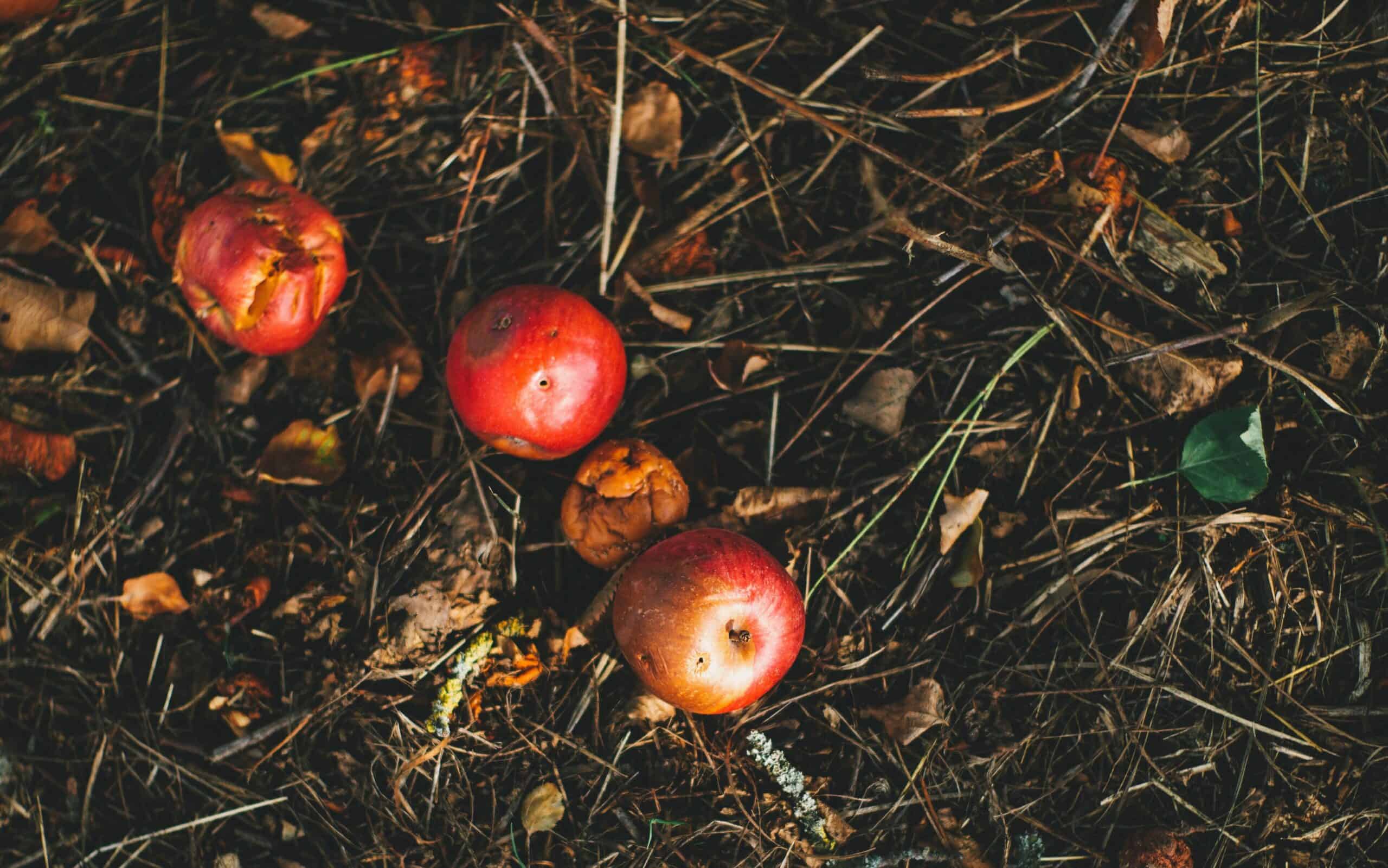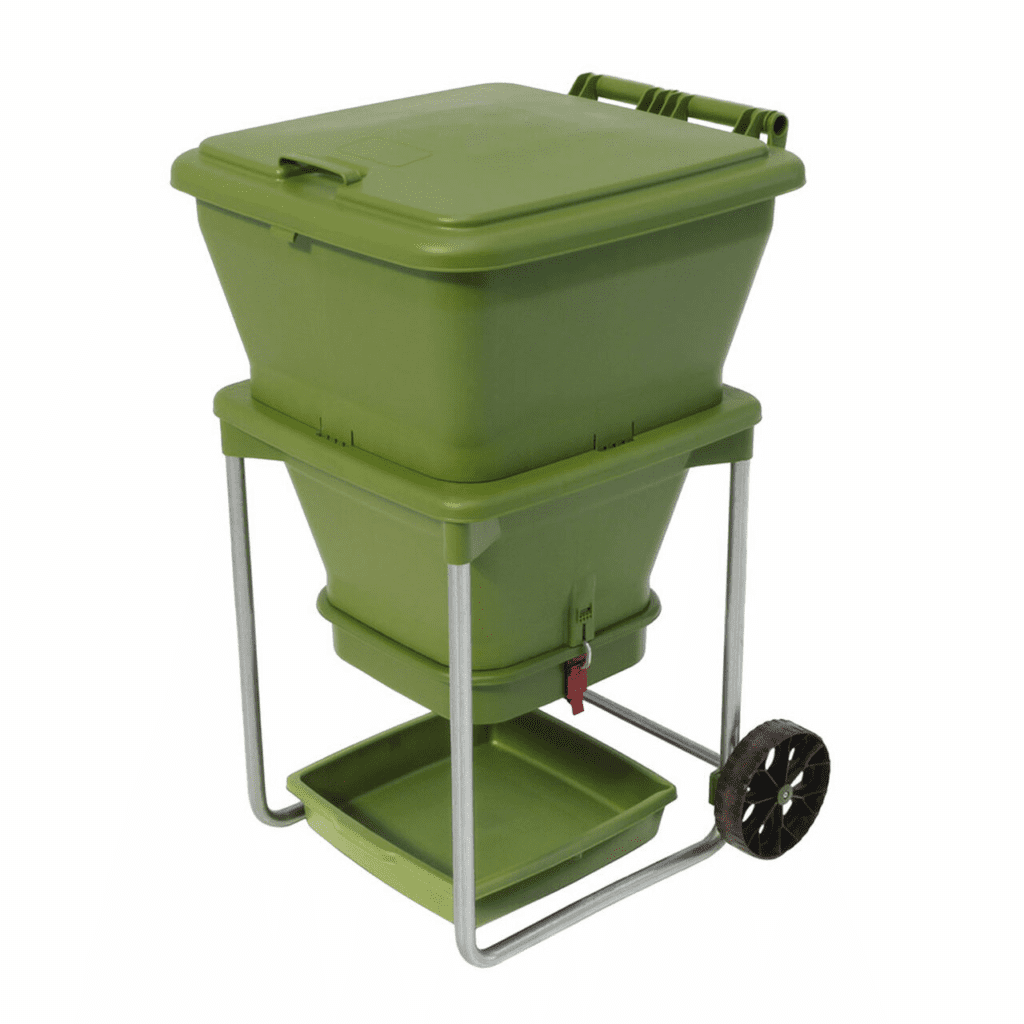Introduction – Composting Is Good In Principle
Composting is a fun and easy way to make good use of your garden and kitchen waste. But in terms of climate not all composts are created equal. We look at ideas below for how to make a compost for your own home.

If the grass looks greener on the other side of the fence, it’s just because they have better compost. Today I want to talk about building a compost, but first, I just want to point out that not all composts are created equal when it comes to carbon emissions.
Why Compost? Methane Reduction Is The Biggest Benefit
When organic materials like food scraps, manures, and grass clippings are thrown into a landfill, buried underneath other trash without access to fresh air, they don’t release carbon dioxide like they would if they were decomposing in nature.
Instead, they are broken down by bacteria in an anaerobic (oxygen-free) environment and release methane and other volatile organic compounds which are more harmful and contribute to global climate change.
Landfills are bad for global warming because the methane released is much more powerful than carbon dioxide as a green house gas, and can cause more damage to the environment. In contrast, in a compost, organic matter breaks down into shorter lived carbon dioxide and are part of a natural carbon cycle, ready to go back into another plant.
Know Which Is Better – Cold Vs Hot Composts
When you have a cold, aerobic compost, it produces carbon dioxide, methane, hydrogen sulfide, and energy. The methane is a green house gas with enormous warming potential and therefore a problem for climate change in contrast to a hot compost, which produces a less intensive mix of carbon dioxide, water, and energy. Therefore it is better to make a hot compost.
Avoid Putting In The Wrong Things, Excess Moisture, And Not Letting Air Mix
A couple of years ago, when we moved into this house, we inherited this compost bin. The idea is that you put your grass clippings and leaves in the top, and then, after a few years, compost comes out the bottom magically. But when we got the house, this bin was completely full of rotting slime of grass clippings, because people put the wrong stuff in it and it doesn’t get any air or mixing.
This is what my actual compost looks like. You can see that it’s made out of some brick pellets with a little bit of added timber. It’s got a nice low piece of timber at the bottom so I can get in and turn it, and a little lid on it to make sure it doesn’t get too much rain.
Now at the risk of putting wrong things in, also don’t hesitate to put in things that should go in. For our kids’ Easter for example, even what would usually be plastic eggs that we put out for them to pick up have alternative options of compostable Easter eggs.
What Else Not To Put Into The Compost
Compost bins should not contain meat, dairy, fats, or oils. These items will attract pests, such as rodents and flies, that can contaminate the compost. Additionally, non-organic materials, such as plastics and glass, should not be placed in a compost bin.
Mix Brown And Green To Start, And Then Food Waste
This compost heap is far from perfect, but it does allow them to mix my stuff on a regular basis at least once a week. They get a good mix of brown and green so that I can get my temperature up when you first start. You need to prime it with some layers going so start with some really carbon-rich twigs, branches, or wood chips that preferably can be broken up and then have a lot of space between them to air.
Add Cardboard
Next up, you might add leaves and then another layer of grass clippings on top and then some brown stuff, maybe some cardboard. And then you start to work your food waste into it. And ideally, you need to get your carbon to nitrogen ratio around 30, which will provide the ideal conditions to create a lot of heat and cook your compost, but also to deliver the right nutrients for future soil.
Turn The Compost
Turn the compost every 3 or 4 days so that materials at the edges are brought to the center of the pile. Turning the pile is important for complete composting and for controlling odor. It is not difficult to turn the compost pile. You will need to wait at least two weeks before turning the pile, to allow the center of the pile to “heat up” and decompose. Once the pile has cooled in the center, decomposition of the materials has taken place:
Keep Up The Temperature Of The Heap
This compost heap is about 40 degrees centigrade in the middle at the moment, which considering how early in the year it is, is a good sign. In it should be much more moisture in the next month or so as I get more grass clippings on it. Serious hot composting like this isn’t everybody’s cup of tea it involves a fair bit of work and you’ve got to turn it over and get and sturdy but some people don’t have the space or the time for this.
To monitor the temperature of a compost heap, a thermometer can be inserted into the center of the heap. The compost should reach a temperature of between 110°F and 150°F. If the temperature is too low, the composting process may take longer. If the temperature is too high, the compost may be damaged.
You can purchase a compost thermometer online or at a local gardening or hardware store. A compost thermometer is a simple device that measures the temperature of a compost pile, allowing for optimal composting conditions to be maintained.

Check this link composting thermometer if you’re interested in the product from the image above.
Composting Options When You Have Limited Space
You do have other options you can consider a Bokashi, a word meaning “fermented organic matter” and in fact is a Japanese kind of composter. Another great idea for confined spaces is a worm composter which is a fair bit of work but can produce amazing compost if you really know what you’re doing.
The Hungry Bin is an efficient way to compost kitchen waste. The worms quickly convert the waste into castings and a nutrient-rich liquid, which are both excellent natural fertilizers. The Hungry Bin is a continuous flow vermicomposter that does not require turning or stirring like a conventional composter. The system is modular, so additional bins can be added as needed.
Worms And Worm Composting
This does mean you need to get worms! The worms consume organic matter and excrete castings that are high in nitrogen and other minerals. Worm composting is a simple and efficient way to reduce your carbon footprint and provide your plants with a natural fertilizer. For added detail, consider the species of worms – European nightcrawlers vs red wigglers are different as they take different amounts of time to reach maturity, and reach different sizes in adulthood, and have different levels of activity.

That’s it for today, I hope you can see why it’s a good idea to put a fork into your compost. Join us tomorrow at six-and-thirty where we’ll talk about eating seasonal food.
Back To the Shrink Guide: Introducing the Shrink
Further reading on gardens and compost:
How to start a vegetable garden that suits you
How to build a compost bin
Is my compost bin contributing to climate change
Hot composting in 18 Days
Lindsay Wilson
I founded Shrink That Footprint in November 2012, after a long period of research. For many years I have calculated, studied and worked with carbon footprints, and Shrink That Footprint is that interest come to life.
I have an Economics degree from UCL, have previously worked as an energy efficiency analyst at BNEF and continue to work as a strategy consultant at Maneas. I have consulted to numerous clients in energy and finance, as well as the World Economic Forum.
When I’m not crunching carbon footprints you’ll often find me helping my two year old son tend to the tomatoes, salad and peppers growing in our upcycled greenhouse.
